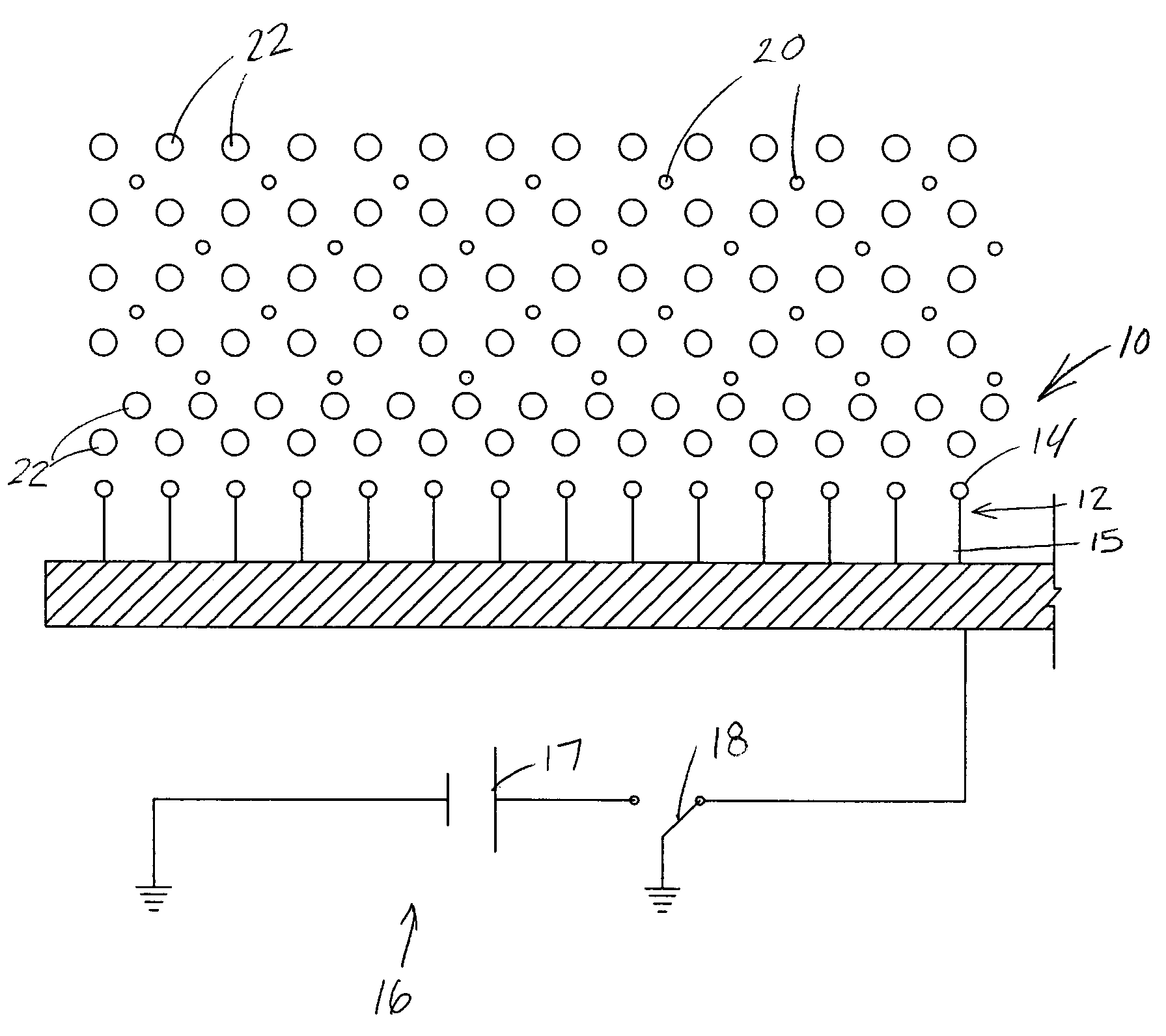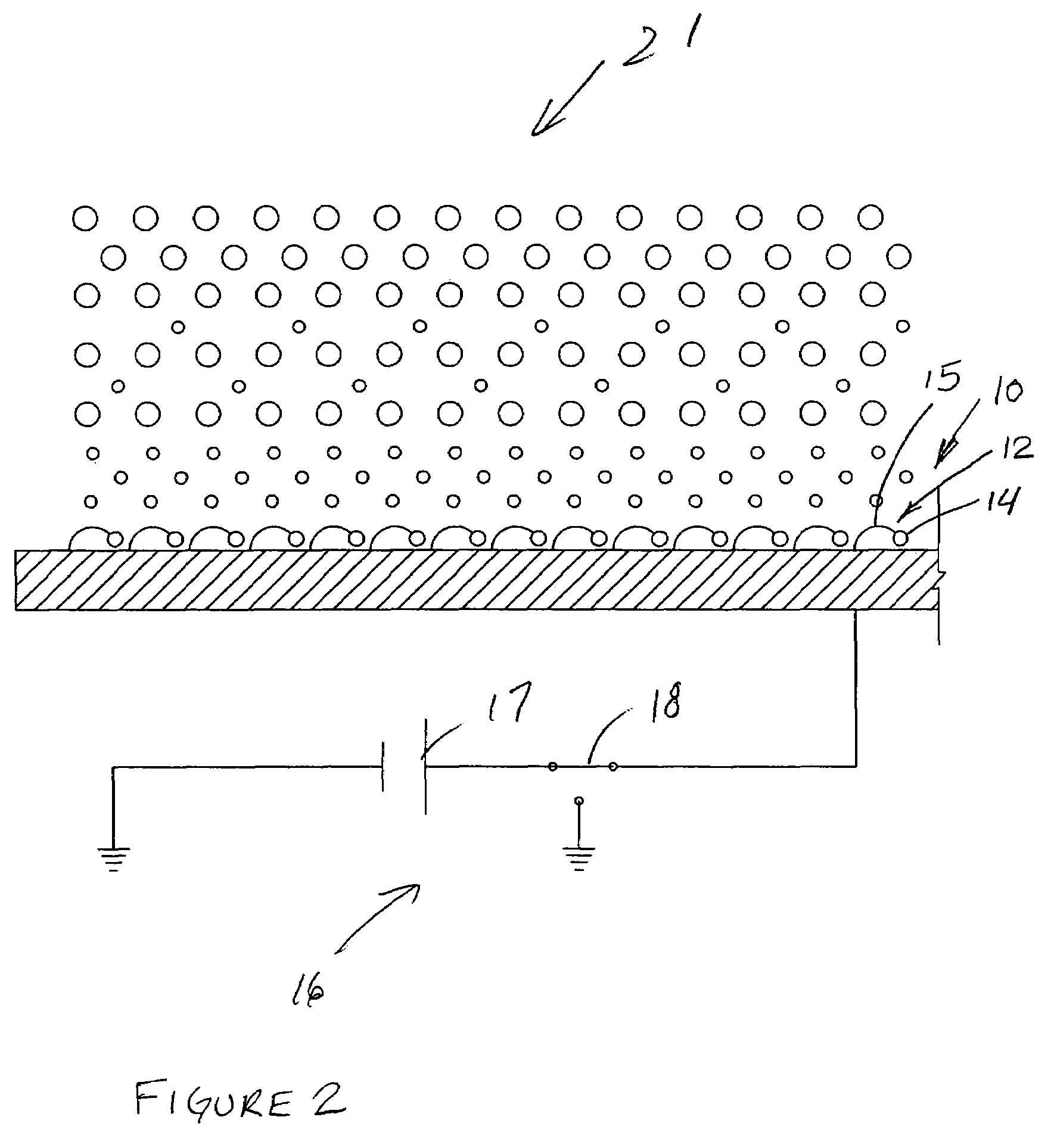Fluid separator with smart surface
a technology of smart surface and separator, which is applied in the direction of crystal growth process, machine/engine, electric/magnetic means, etc., can solve the problems of environmental concerns that may simultaneously complicate this approach, requiring a relatively high degree of purity of re-injected water, and generally not being able to achieve the environmentally responsible production of hydrocarbons, etc., to achieve enhanced separation speed and effect of speed and efficacy
- Summary
- Abstract
- Description
- Claims
- Application Information
AI Technical Summary
Benefits of technology
Problems solved by technology
Method used
Image
Examples
Embodiment Construction
[0022]FIG. 1 conceptually illustrates a smart surface generally indicated at 10, having a plurality of surface-confined molecules 12 preferentially exposing hydrophilic portions 14 of the surface-confined molecules 12. A smart surface may be succinctly defined as a surface “having a plurality of surface-confined molecules sufficiently spaced to undergo conformational transitions in response to an applied voltage to preferentially expose hydrophilic or hydrophobic portions of the surface-confined molecules.” The chemistry and engineering involved, including the types of molecules selected and how they are produced and assembled to the smart surface 10, is generally known in this emerging art, and is therefore not discussed herein. A circuit conceptually indicated at 16 includes voltage source 17 and is wired to the smart surface 10. A voltage may be selectively applied to the surface 10 by closing the circuit 16 with gate 18. In FIG. 1, the circuit 16 is open to an “off” position, as...
PUM
| Property | Measurement | Unit |
|---|---|---|
| density | aaaaa | aaaaa |
| hydrophilic | aaaaa | aaaaa |
| hydrophobic | aaaaa | aaaaa |
Abstract
Description
Claims
Application Information
 Login to View More
Login to View More - R&D
- Intellectual Property
- Life Sciences
- Materials
- Tech Scout
- Unparalleled Data Quality
- Higher Quality Content
- 60% Fewer Hallucinations
Browse by: Latest US Patents, China's latest patents, Technical Efficacy Thesaurus, Application Domain, Technology Topic, Popular Technical Reports.
© 2025 PatSnap. All rights reserved.Legal|Privacy policy|Modern Slavery Act Transparency Statement|Sitemap|About US| Contact US: help@patsnap.com



